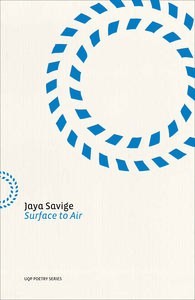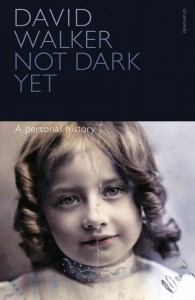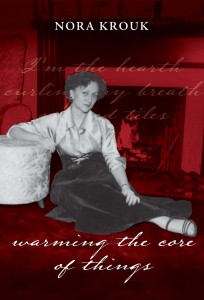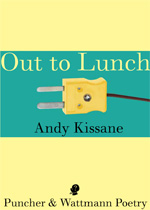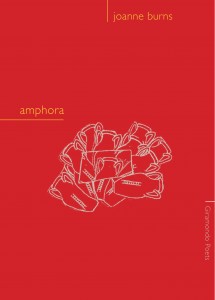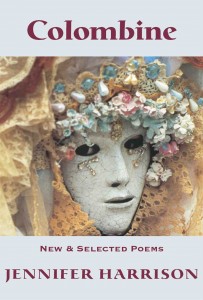Michelle Cahill reviews “Surface to Air” by Jaya Savige
by Jaya Savige
University of Queensland Press, 2011
ISBN 9780702239137
Reviewed by MICHELLE CAHILL
There is a dazzling quality about Jaya Savige’s second collection, Surface to Air, though if the poems are rapid and rippled in their dialectic, their wit is matched by complexity. Savige’s virtuosity accommodates an impressive range of poetic forms, from the lyric to the narrative, from the sonnet to the visual and the elegy. His subject matter shifts from real to hyperreal, from technologies of the personal to the political in scenes refracted through the lens of historical and mythic relativities. This said, the ethical intention of Surface to Air seems more probing than in Latecomers. Despite the supreme assurances of tradition, logic and erudition, there are undercurrents of cultural doubt and disembodiment fragmenting the identity of speaker-subject to the point of vulnerability. It is at such thresholds that Savige’s most convincing poetry performs.
The parabolic argument in Surface to Air is evidenced by the structure of its sections. There’s a movement from the organic contingencies of physical existence in “Snorkelling Lessons” to the transcriptive poems of “Circular Breathing,” the ballistic, reflexive tropes of “A Brief History of Risk,” to the final sequence “Memory Card” in which nostalgia and rhetoric, reason and progress are mediated. It’s an ambitious arc informed by awareness of the uncontrolled relativism of postmodern challenges to the body, to coherence, temporality and space. That the self is in crisis is sensed from the opening poem, “Sand Island”, which evokes, with anatomical precision, the perceptual disruptions of leaving and clinging, mystery and experience. In the search for “common knowledge”, even the sea must be sundered:
What cleaves each muscle of wave
from its bone of ocean?
Hear the snap
of its ligaments
Listen to the severing tendons.
(3)
The poem seems intentionally to echo the opening poem of Latecomers with the poet being in “two minds”, though now the sense of a distant destination lies beyond an antipodean or utopian reach. It is not merely home or the body that the poet is called to renounce, but language and its tradition. Savige effortlessly melds the diction of geek-speak with various lyric forms throughout the collection, yet he seems most at home in the natural world, as this poem shows in its evocation of themes:
This morning a stingray
seeking a poem
of its own
strayed into the estuary
of this one.
Crestfallen, it turned
at my dismissive gesture.
(5)
The phrasing is flawless, truncated; the personification creates pathos. There are undercurrents of regret in this and other poems. “Circular Breathing” describes a scene in which the poet expatriate, hearing the didgeridoo being played in a Rome piazza, is faced with his own neglect and disconnectedness from home:
I want to bolt up the stairs of the fountain
and claim that sound as the sound of my home—
but stop when I recall how rarely I slow to hear
the truer player busking in King George Square.
Memory kinks my measured walk into a lurch.
My stomach fills with fire. Far above cold stars wheel
around the spire of Rome’s oldest Christian church.
(25)
Despite the free verse stanzas the plain, unaffected tone of this poem strengthens its authenticity, providing a human face to a more general theme of colonial inheritance. This sensitivity is appealing to the reader. We encounter it in poems like “Elegy for an Old School Friend” and in the dramatic climax of “Riverfire.” Vulnerabilities are exposed as the poet questions class privilege and cultural assumptions and yet there are distinct sources of conservatism in Savige’s lyrics. His rhymes and puns can be reductive, his registers at times are anachronistic, though they exercise humour as they parody and invoke Elizabethan rhetoric. The repetition of “hum,” “sum, “fun and Om” in the penultimate stanza of “Circular Breathing” strives for a wholeness, that is undone by the closing stanza’s paradox of psychological incompletion.
Juxtapositions arise in tone and image, between the conventional and the new, creating complexity and richness. Savige is the consummate metaphysician, armed with a volley of conceits ranging from gaming, astronomy, love, speed. Space for the poet is a cyber field, where language implodes on the physical surface. Many poems reference the culture of technology, its frames and tropes suitably materialized in a cosmos where “spry grandmothers compose text messages”, where Raphael’s Galatea is a 16th century Paris Hilton, “statuesque on a jetski” with her “skimpy cosi slipping from her hips” and where, according to Wikipedia, the Iliad is an e-book device. “The Iliad” is a witty reflection on the derivative intertextuality of late capitalism which trashes history, dumbing down the Homerian epic to an attractive product. At the same time, it’s a response to the crisis in print. The poet takes up the gauntlet, reversing the assault on language with sweet revenge. It’s an art to extract lyric essence from cultural jargon and I admire his success in poems such as this. Another of my favourites is the sexy, savvy “Disconnect ” with its
Pale wireless mermaid
washed up on the shore
by bright pixeltide.
(43)
Here, the conventionally addressed lady of courtly lyrics is busy booking cheap flights, surfing the net, persuaded by the poet to come to bed, to “close down windows.” and “zip the file.” Reminiscent of Donne or Marvell, Savige renews convention with agile associations of thought, with clarity of image. His variations in rhythm and tone are pleasing. Other poems like “First Person Shooter” are more protracted in their technique, and more contrived theoretically.
There’s no doubt that eschatological concerns run as a sinister theme through the collection, as it questions the auguries of innocence and experience. I found strange Blakean echoes in the poem “Crisis”:
Once I was entrusted with a planet
I was a child in a sweltering house.
All the world’s peace was up to me,
Quiet, cross-legged before the mouse.
(33)
The seemingly naïve child-subject playing a Nintendo PlayStation or Atari game is solely responsible for the planet’s “cinereous grey”, its missiles and “coughing creatures.” Disturbingly, the child’s passive absorption of violence, is imbued with Cold War psychology and the militarisation of space. The emergence of this virtual consciousness, implied by the book’s title, seems informed by experience as much as by theory. It brings to mind Baudrillard’s social philosophies, particularly those concerned with the West’s technological and political global expansion, the way in which the simulacra are seductive. We hear echoes too, of Foucault’s technologies of the self, connecting the microrelations of the subject in space and time with the macrologic of power.
Savige argues that in blurring the distinctions between self and technology, the simulacra have social consequences. In “Missile”, the player will ride to the Pleiades in search of blue jewels, with the trick being
to avert your vision, look off
to one side, allow a less abused
section of the retina to drink
in the distant emanation.
Alterations in tone from awe to nihilism in these shorter lyric pieces create an impact sometimes lacking in the longer poems. While the syntax is conventionally ordered, the diction is restless, the language layered with adjectives and nouns used as verbs as in “zip”, “swing”, “sticky”, “spark”, “out-yoga”, “bail”, “jink”. This action invigorates poems that might otherwise be burdened with logos, jargon or social theory. A recycling of poetic personas and their personal dramas is refreshing in poems like “26 Piazza di Spagna” (Keats’ death place) or the translation of ‘La notte bella” by Ungaretti. “The Minutes” rarefies Auden’s separation of poetry from the world of finance, with the poet recast as fiscal secretary, taking the minutes in the business of illumination. It’s a humourous, though somewhat flat description, symptomatic of the poet’s audacity to address any subject he chooses.
For me, some of the most beautiful poems in this collection are those in which one senses not speed but stillness, when the moment is distilled and thought, emotion and experience are entwined. “Summer Fig” for instance, captures a brief reprieve from “the impossible/puzzle of light, cut by hot oscilloscopes.’ If nature abounds, the simulacra of a crow’s silhouette awaits the poet’s attention, while technology’s shadow is perilously cast by the ‘giant fig,/downloading gigs of shade onto the fresh, cut grass.”
Personal crisis is constantly present, beautifully evoked amidst the civic in “Public Execution”. In “Desuetude” the poet, overwhelmed by life’s economic demands has “fallen outside of the habit.” Yet, constraint is obliquely resisted in the scatological “Posture.” Its edgy rhythms and attitude liberate the poet from political correctness:
“Your voice is so handcuffed
is how it looks to me, every
tremulous bubble frisked
for sense.”
(68)
And in the shapely “Stingray” the marine creature is like a “thought” barbed in the “sea’s mind” “patrolling the palimpsest” where paradise is the antithesis of clarity.
For a second collection it’s an ambitious constellation, which yokes together disparate images and tropes. The poems are layered, skilful, postured and probing. Their permutations operate in versed and free verse forms. Personal crisis is juxtaposed with historical and social contingencies, and yet the collection turns a full circle by its closing poem, “Riverfire”. By taking the statue of Oxley, a 19th century Queensland explorer, down from his pedestal and imbuing him with diverse cultural elements, by giving voice in his last stanzas to a Murri woman who has witnessed a shooting star, Savige turns his gaze from our colonial past to the future. Certainly he has the capacity for such manoeuvres. Savige is a privileged tenant of the “eternal city” whose conservative values are wholeness, resolution and tradition. In Surface to Air he strafes the frontiers of language where power and consciousness are at odds; where risk is mediated.
MICHELLE CAHILL writes poetry, fiction and essays and serves as editor for Mascara Literary Review. Vishvarupa is her most recent collection of poems.
